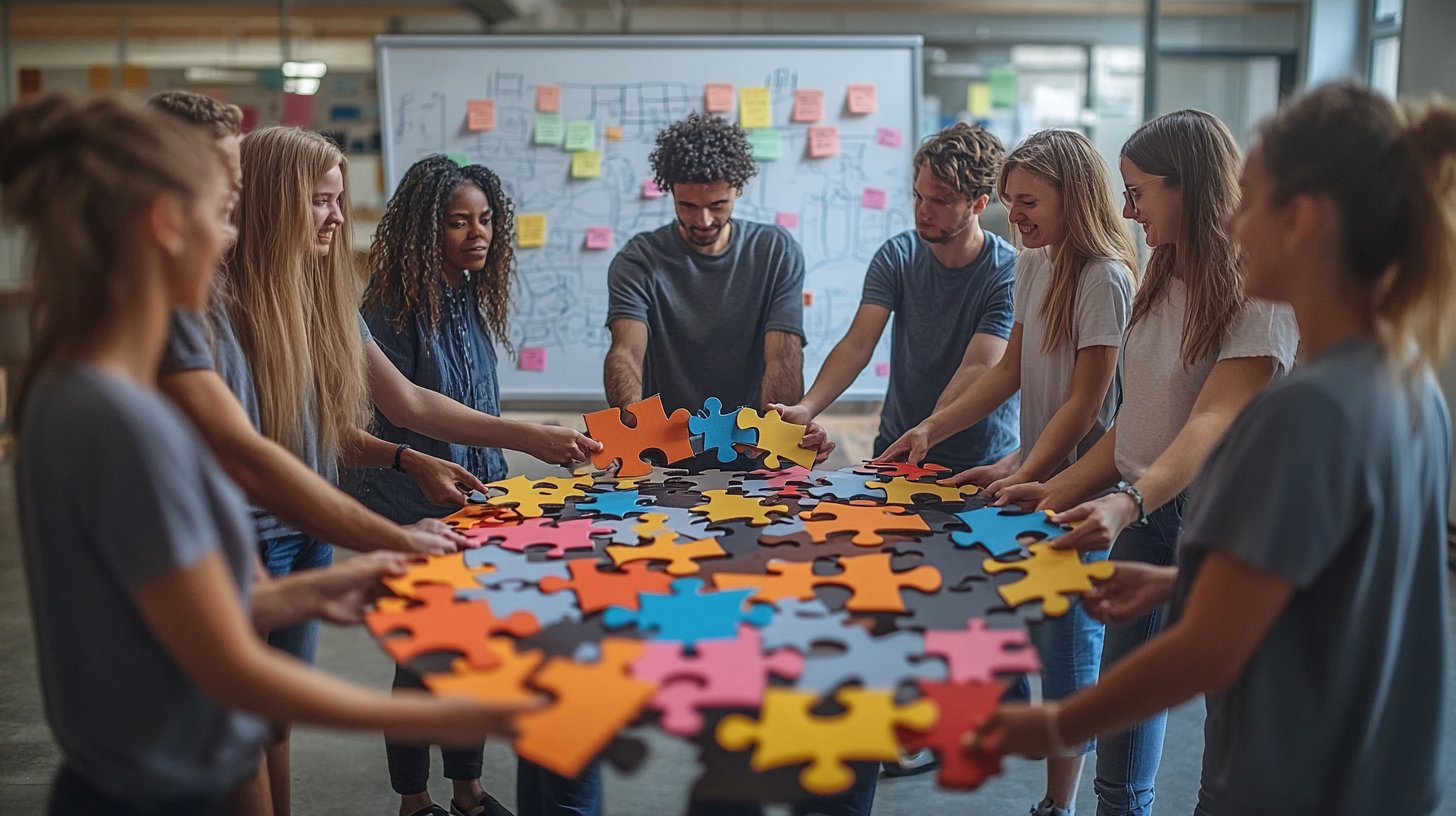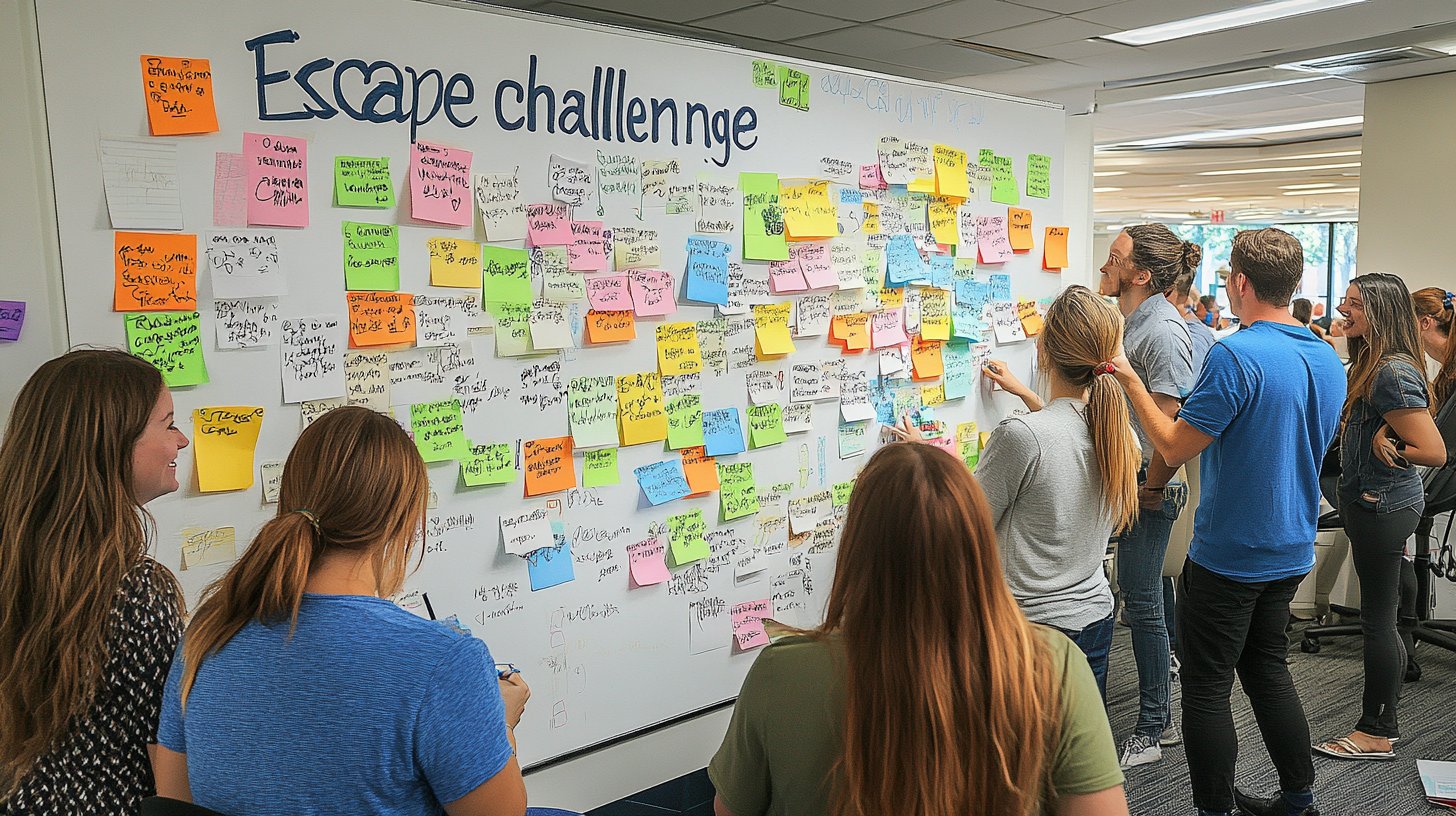Is your team lacking cohesion or struggling to communicate effectively? These challenges often hinder overall performance and workplace satisfaction. Team-building activities offer a concrete solution to strengthen bonds, motivate employees, and foster a more harmonious environment.
Imagine a setting where your employees discover one another differently, collaborate spontaneously, and overcome challenges together. These moments provide more than just a break—they build skills, improve interpersonal relationships, and stimulate creativity.
If you are a manager or leader, you aspire to have a united and proactive team. Yet, internal tensions or poor communication may persist. Team-building activities address these issues directly, bringing tangible benefits like better collaboration and enhanced engagement.
Discover how these activities can transform your team and boost its daily performance.
Improving communication within the team
Effective communication is the cornerstone of any high-performing organization. Team-building sessions allow employees to get to know each other outside the professional framework. They break hierarchical barriers and facilitate open and honest exchanges.
Activities such as role-playing games or cooperative exercises encourage participants to communicate and express their ideas freely. These interactions not only enhance verbal communication but also foster tacit understanding among team members. As a result, misunderstandings are reduced, contributing to a better work environment.
Building mutual trust
Improved communication naturally leads to increased trust among employees. Team-building activities create perfect opportunities to foster this trust. Group challenges, like obstacle courses or team puzzles, require close collaboration where each member must rely on others.
By succeeding together, employees develop a shared sense of achievement and mutual reliability. This solid foundation translates into better coordination in daily projects.
Strengthening team cohesion
One of the main goals of team-building activities is to strengthen team cohesion. Working together in a relaxed setting allows employees to appreciate the diverse strengths and skills of their colleagues. This fosters a positive dynamic that extends to the workplace.
Activities like problem-solving workshops or team sports encourage participants to collaborate effectively. This collective synergy enhances team spirit and helps achieve common goals more easily.
Creating strong bonds
Building genuine connections significantly contributes to a harmonious work atmosphere. Team-building activities provide opportunities for informal exchanges, where employees can share personal and professional experiences. These moments of camaraderie promote an inclusive company culture.
When employees feel connected to one another, they are more likely to help and support their colleagues when needed. Such solidarity naturally strengthens team cohesion.
Boosting overall performance
Team performance improves when employees work harmoniously. Team-building activities play a key role in this process by facilitating strong interpersonal relationships and offering opportunities to develop new skills.
Participating in business simulations or personal development workshops allows employees to acquire learnings directly applicable to their roles. These experiences enrich the collective pool of knowledge and expertise within the team.
Motivating employees
Employee motivation increases when they feel valued and part of a cohesive team. Team-building activities demonstrate that the organization invests in the well-being of its employees. This reinforces their engagement and loyalty to the company.
A motivated team is more productive and willing to go the extra mile to achieve set goals. The fun and stimulating activities offered during team-building sessions reignite enthusiasm and passion for work.
Encouraging creativity and innovation
Creating a space where ideas can be shared freely encourages creativity. Team-building activities help employees step out of their usual environments and adopt fresh perspectives. Creative exercises like brainstorming sessions or artistic workshops unleash participants’ imagination.
This openness to innovation and change is essential in an ever-evolving professional world. Innovative ideas emerge more readily, and original solutions to challenges are devised with ease.
Improving teamwork
Teams that collaborate effectively achieve better results. Team-building activities aim to improve teamwork by emphasizing the importance of both individual and collective contributions. Members learn to recognize and value each other’s inputs.
This reduces internal conflicts and continuously enhances common working methods. Teams become more resilient and capable of overcoming obstacles together through a strengthened collective approach.
Retaining employees
Employee retention is a major challenge for many organizations. Team-building activities help reduce turnover by boosting morale and cultivating a strong sense of belonging. Employees who feel connected to their team and engaged with their company are less likely to seek opportunities elsewhere.
Regular team-building events often indicate that employees enjoy their work environment and are satisfied with their jobs. This naturally leads to better talent retention and continuity in the company’s initiatives and projects.
Managing stress
Stress management is a priority for maintaining a healthy and productive work atmosphere. Team-building activities provide necessary breaks, allowing employees to unwind away from their daily tasks. Activities like nature retreats or group yoga sessions help relax and recharge.
These moments of relaxation foster a clear and rested mind, increasing employees’ ability to manage stress when they return to work. Effective stress management translates into better mental health and greater efficiency in the workplace.
Practical tips for organizing effective team-building activities
- Identify the team’s specific needs to select suitable activities.
- Include all team members to ensure inclusivity and maximize impact.
- Vary activity types (intellectual, physical, creative) to engage all personality types.
- Regularly schedule team-building sessions to create a lasting habit.
- Gather feedback after each session to adjust and improve future editions.
Concrete example: team-building benefits table
| Objective | Team-Building Activity | Main Benefit |
|---|---|---|
| Improving Communication | Role-playing games | Better idea expression |
| Strengthening Team Cohesion | Team sports | Creation of strong bonds |
| Motivating Employees | Development workshops | Increased engagement and loyalty |
| Encouraging Creativity | Collective brainstorming | Innovative ideas |
Team-building activities are not merely enjoyable distractions. They play a fundamental role in a company’s success by helping to improve communication, strengthen team cohesion, and foster a fulfilling work environment. Adopting these practices can transform a group of employees into a synergistic force capable of reaching new heights.







